Tuscany and its beautiful hilltop towns
Italy, a travelers favourite. Article about exploring Tuscany on a small group tour of mature and senior travellers, couples or solo travellers. Learning about the history of Tuscany, the role of the Romans, the families of power and the artists.
16 Jul 20 · 22 mins read
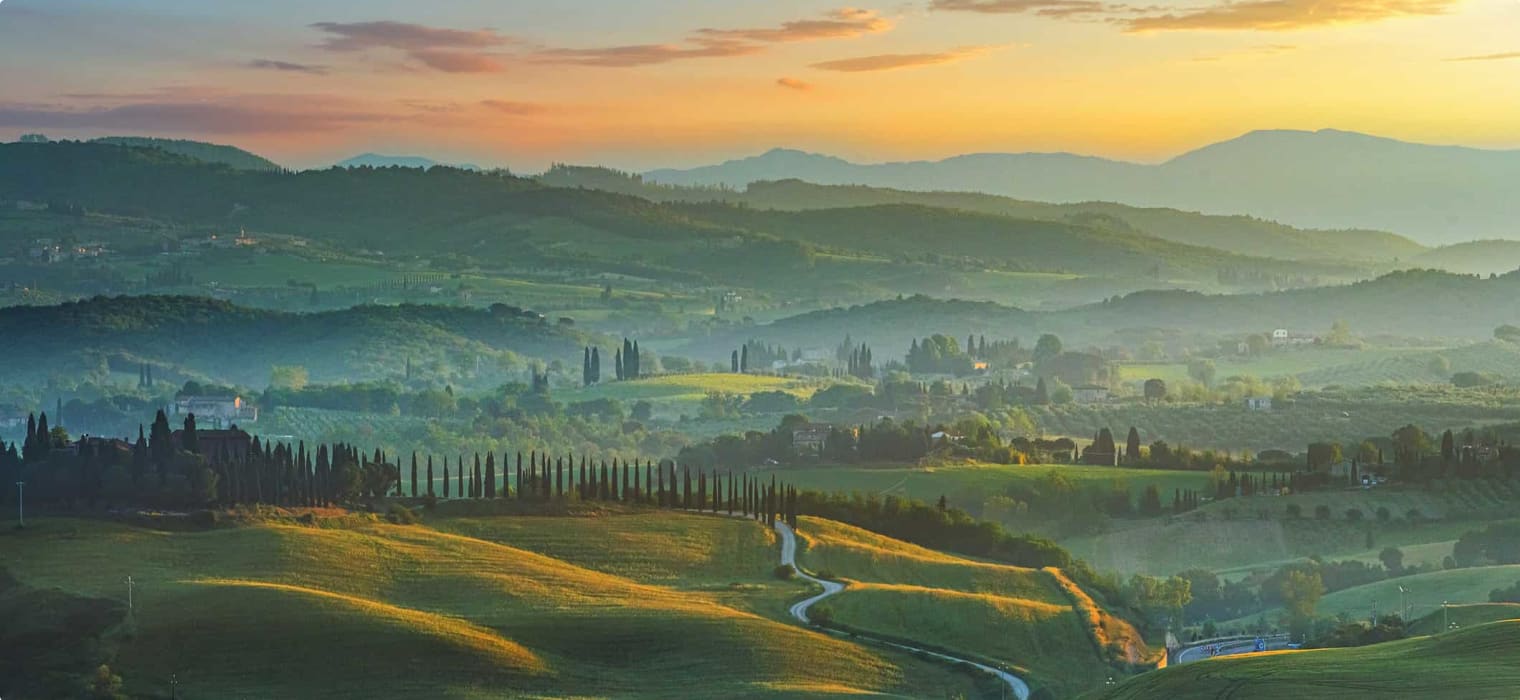
Tuscany’s gorgeous countryside
Tuscany, named after the Etruscans, the forerunners of the Romans, with its spectacular hill towns and scenery, is one of Italy’s top vacation destinations. Tuscany‘s attractions include historic cities and art, lush vineyards, great wine and food, medieval hill towns, beaches, and beautiful countryside. These medieval town(s) are best explored on a guided walking tour with our friendly local guides. Our tours include free time for you to enjoy a leisurely tuscan lunch and local wine.
Located in the central, western part of the country, Tuscany is bordered by the Apennine Mountains to the North and East, the Apuan Alps on the North West and by the Tyrrhenian Sea on the West. Its major cities include the renaissance masterpiece city of Florence, and several other fine cities and towns such as Lucca, Siena and Arezzo. The famous leaning tower of course found at Pisa, to the west of the region. Tuscany is where, under the patronage of wealthy families, the arts and literature flourished as nowhere else in Europe giving birth to the period known as the Renaissance, the rebirth or revival after the Middle Ages. Florence, synonymous with Tuscany, home of the Medici and Michelangelo is the most important Renaissance architectural and art centre. Its Duomo and Baptistery are magnificent as is their large piazza. Like Venice, Florence was among the ultimate in city-states and set an enduring standard for dynastic rule.
But it is not just the fine cities that attract visitors to Tuscany. The Tuscan countryside is exceptionally beautiful, with rolling countryside (although parts are more mountainous) interspersed with pretty villages and the famous cypress trees of the region. To the north of the region lies the Garfagnana valley, a lovely fertile valley perfect for hiking and cycling, with the renowned quarries of Carrara a little to the west.
Heading south through central Tuscany towards Siena, the highlights include San Gimignano – a 13th century town with an excess of mediaeval towers, and the attractive hilltop towns of Volterra and Colle di Val d’Elsa. The renowned Chianti wine region is found between Florence and Siena, perfect places to stop for lunch and a glass of chianti wine, with multiple wineries dotting the region you are bound to to be spoilt for choice.
Odyssey’s small group tours to Italy visit many of the cities in Tuscany, with a focus on history, food, art and heritage. For more details and on tours to Tuscany read on and learn about some of the wonderful Tuscan towns we visit with our small group tours .
Florence (Firenze)
Renowned throughout the world for its art, the beautiful town of Florence is the capital of Tuscany region. It lies on the banks of the Arno, a series of bridges linking each side of the town. Originally a mere district of Etruscan Fiesole until elevated to Florentia in Roman times. It was laid out following the principles of Roman town planning, elements of which are still evident today. With one of its main attractions being the Piazza della Signoria, where Palazzo Vecchio is located. The city achieved autonomy after the death of Countess Matilda in 1155 and set up communal rule under twelve consuls, after which there followed a period of rapid expansion.
Florence rose to be one of the largest and richest cities in Europe by its manufacture of, and trade in, fine woollen cloth, and by international banking. Governed by its merchant elite, the city came to rule over most of Tuscany, absorbing smaller city-states like Arezzo. In 1400 Florence survived a threat posed by the expansionist ambitions of the Visconti, the dukes of Milan. This outcome was celebrated with magnificent works of civic patronage: splendid bronze doors, the eastern doors of the Battistero di San Giovanni, the baptistery of the cathedral at Florence, which was dedicated to John the Baptist, the patron saint of Florence, were executed by Lorenzo Ghiberti; the formidable project of completing the cathedral with a dome – the largest in Western Christendom – was given to the brilliant architect Filippo Brunelleschi. The Medici, the powerful and wealthy family of bankers in Florence during the period of the Renaissance, was prominent in supporting both artistic patronage and the scholarly activity in reviving interest in the classical civilisations of Greece and Rome.
In 1434 Cosimo de’ Medici took over the reins of power in the republic, deftly managing its government until he died in 1465, giving Florence exceptional stability and international prestige. His son and then his grandson, Lorenzo the Magnificent, maintained the family’s leadership in politics and artistic patronage until 1494. When Lorenzo’s son, Giovanni, became Pope Leo X in 1513, Medici rule was well entrenched, continuing until the family, as Grand Dukes of Tuscany, died out in 1737. The Renaissance, which began in Florence, owes as much to Medici patronage as to the artists whose genius they fostered: Donatello, Ghiberti, Fra Angelico, Botticelli and Michelangelo, to mention but a few.
The city flourished until the end of the 16th century as a centre of art, music and science. Upon the death of the last Medici, the Grand Duchy passed to a branch of the Hapsburgs, becoming a dependent of Austria.
Tuscany joined the Kingdom of Italy in 1860. Florence became the kingdom’s capital from 1865 – 1870 during which a period of controversial remodelling of the city followed. Today Florentines are heavily involved in craftsmanship and tourism. The University of Florence is held in high regard.
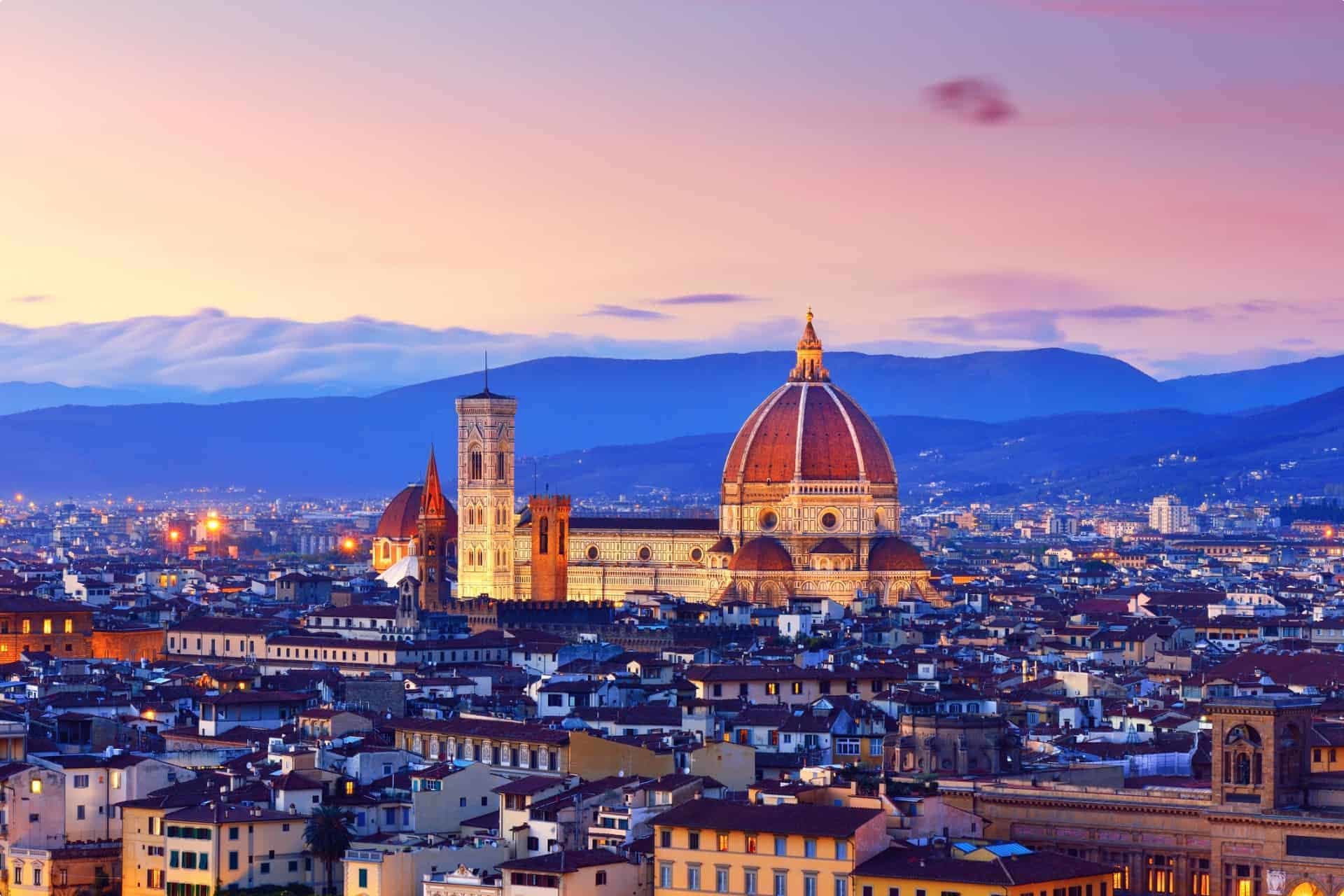
San Giovanni Valdarno
San Giovanni Valdarno was founded in 1299 by the city of Florence, which established several towns in the contado fiorentino during this period, with the express purpose of diluting the power of the feudal nobility. The town, which was on the road leading through Arezzo and on to Rome, was divided into equal sized lots, and Florence offered freedom to the serfs who decided to leave their Lords and build homes in the new town.
Members of the Nobility were not allowed to settle there. Florence also offered substantial tax breaks, and land or the right to trade with travellers. The downside was that the freemen had to build their houses, and also the town walls. Construction of the latter went slowly and San Giovanni was attacked repeatedly before they were finally completed in the1360s. San Giovanni Valdarno became a bustling commercial centre, attracting both trade and industry.
San Giovanni Valdarno is laid out in a grid pattern, with a fairly large square in the town’s centre, which is occupied by Palazzo Arnolfo, the Town Hall.
The Annunciation of San Giovanni Valdarno painted by Fra Angelico from 1430 to 1432, is held at the Museo della Basilica de Santa Maria delle Grazia in San Giovanni Valdarno. It was looted from Italy during the Second World War by the Germans and eventually returned.
Vinci
The beautiful hill town of Vinci, located on the hills of Montealban, is the birthplace of Renaissance polymath Leonardo da Vinci. An easy day trip from Florence. The Museo Leonardiano is located inside the Guidi castle (also known as Castle of the Ship because of its elongated tower shaped like a sailing vessel) and displays some of the inventions and amazing machines created by Leonardo.
At his birthplace, Casa Natale di Leonardo, located just outside the city and immersed in greenery, here our small group tour of Tuscany enjoy a guided tour and learn more about his life and view reproductions of his drawings.
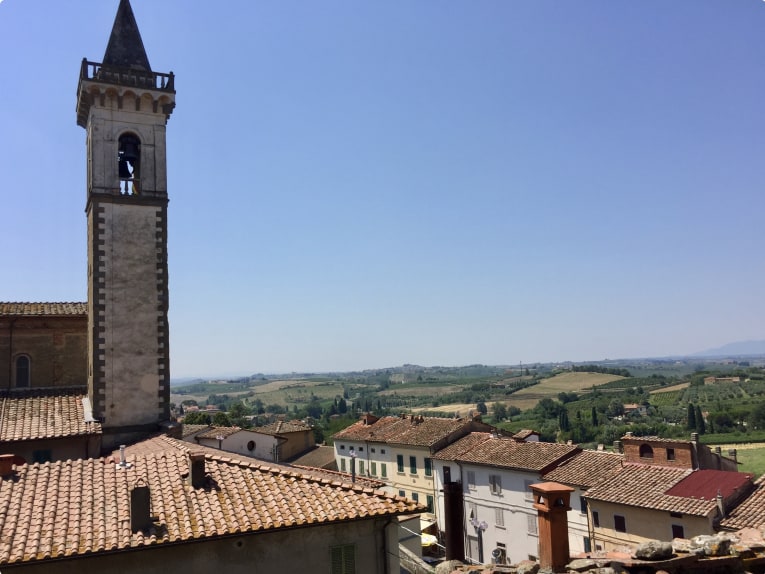
Impruneta
More of a clustering of villages than a single town, it has the spirit of the much-deeper Tuscan countryside, but with enough attractions and local life to keep you busy on a day tour. The name Impruneta is derived from inprunetis meaning “within the pine woods”, and is known for its production of terracotta. The terracotta is made from local clay, has a red coloured finish, and production includes everything from small tiles to large garden vases and statues.
During the mediaeval period, Impruneta and the surrounding villages were part of the fiefdom of the Buondelmonti family whose castle was in the village of Montebuoni. The family first appears in history in the 10th century and they were finally driven from their castle in 1135 by the Florentines. The family retreated to Florence where the Buondelmonti and the Fifani families played a significant role in exacerbating the division of the Florentine population between the Guelf and Ghibelline factions
The Basilica of Santa Maria at Impruneta dates from 1060, being probably located over an ancient devotional site of Etruscan times (6th century BC). It was an important site of pilgrimage during the Middle Ages.
The Basilica was bombed during World War II and few of the original decorations can be seen. The church was restored and the remaining artwork is well preserved and much of the buyiding’s structure was rebuilt in the aftermath, according to its original style. The façade is preceded by a portico by Gherardo Silvani (1634), built by the Florentine people as vow for the liberation from the plague, and by a bell tower from the 13th century. The presbytery, part of which is decorated by Luca della Robbia, housing the relics of the Holy Cross and the Madonna’s image to which the sanctuary is devoted and, which, according the tradition, was painted by St Luke himself. The current Madonna’s image is a heavy restoration by Ignazio Hugford from 1758.
Fiesole
Tucked up high upon the Tuscan hills, this nearby Etruscan village offers great views of Florence. Here our small group tours takes a day trip visit the Bandini Museum which houses works from the 12th – 14th centuries by Della Robbia, Taddeo Gaddi, Lorenzo Monago and others. Another stop is the Civic Archaeology Museum. Its intact amphitheatre and remains of a bath and temple, as well as Roman and Greek artefacts, are on display here.
Also in Fiesole is Cosimo the Elder’s Villa Medici with its impressive terraced gardens. It was one of the first villas in Tuscany surrounded by ornamental gardens, designed to entertain his friends and follow his intellectual pursuits, and to escape from his stressful life. Fiesole is a must stop on any tuscany small group tour.
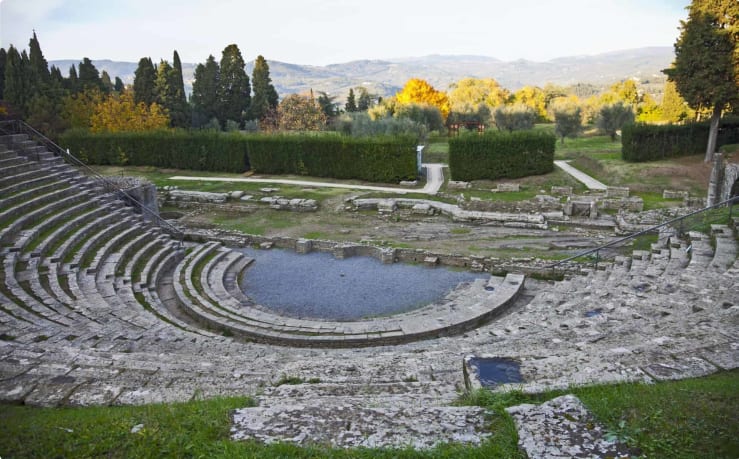
Siena
According to archaeologist Ranuccio Bianchi Bandinelli, Siena is “the sole living model of a mediaeval city”. Its layout is today almost exactly as it was in the 14th century, when Siena’s art and economy rivalled that of Florence. Of Etruscan origin, and later a Roman colony, Siena rose to prosperity when the pilgrim route of the Frankish Way fostered the growth of commerce and trade in the area. The communal institutions established themselves in the 12th century when Siena became one of the main centres of Italian Ghibellinism. The 13th and 14th centuries marked the golden age for trade and the arts. It was then that plans to enlarge the cathedral were conceived, but soon stopped when the plague of 1348 ravaged the population and ill-fated financial enterprises reduced drastically the affluence of the Sienese economy.
After fighting for three centuries against expanding Florence, Siena finally capitulated to Cosimo I de’ Medici in 1555. The city declined over ensuing centuries – its prospects improved in 1861 when vital rail links were established.
Today Siena is a flourishing city, a cultural centre and a university town. It is also famous for the Palio, a horse racing festival held twice annually in the Piazza del Campo – regarded as one of Europe’s most beautiful medieval squares. This bareback horse race harks back to Roman military training but its pageantry is mediaeval featuring handmade costumes for each of the seventeen contrade or districts which participate. A palio or banner is presented to the winner.
South of Siena and extending south-west to Grosseto is the Val d’Orcia, a beautiful natural and cultural park that was inscribed as a UNESCO World Heritage Site in 2004. The scenery inspired many Renaissance artists, with its charming villages, churches and castles and of course the natural beauty of the many vineyards, olive groves and famous cypress trees lining the landscape.
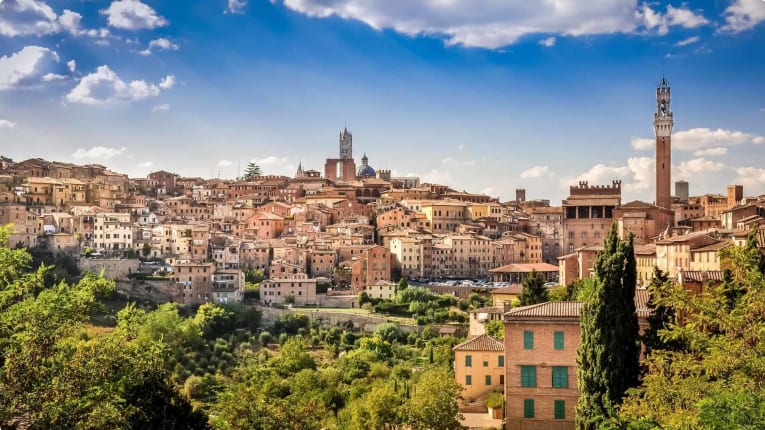
Tours of Italy
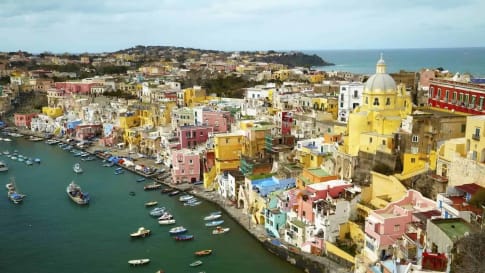
22 days
Jan, Apr, SepAncient History of Southern Italy & Sicily group tours
Visiting Italy
Our program for senior travellers, as well as featuring the rugged countryside of Southern Italy, also encompasses learning about the many civilisations that have shaped this land. We learn about the influence of the early Phoenicians, Greeks, Romans, Byzantines, Saracens, and Aragonese.
From A$16,995 AUD
View Tour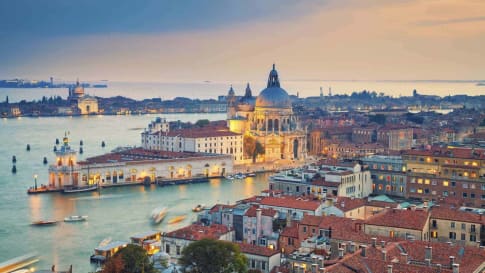
18 days
Aug, SepArt and History of Italy | Small Group Tour for seniors
Visiting Italy
Taken as a whole, Italian Civilization (which includes, of course, the splendid inheritance of Ancient Rome) is absolutely foundational to Western culture. Music, Painting, Sculpture, Architecture, Literature, Philosophy, Law and Politics all derive from Italy or were adapted and transformed through the medium of Italy.
From A$17,525 AUD
View Tour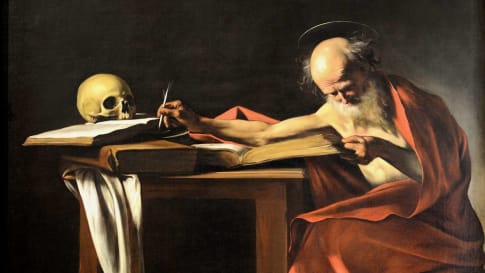
20 days
May, OctCaravaggio’s Journey | Small Group Tour in Italy
Visiting Italy, Malta
On this small group tour of Italy and Malta for mature and senior couples and solo travellers we trace the life of Caravaggio, exploring the artistic works he left behind and the tumultuous life he led. We follow him from his birthplace in Milan to Rome, Malta, Sicily and Naples. In each place he lived Caravaggio left behind a rich legacy of art for us to admire.
From A$15,125 AUD
View Tour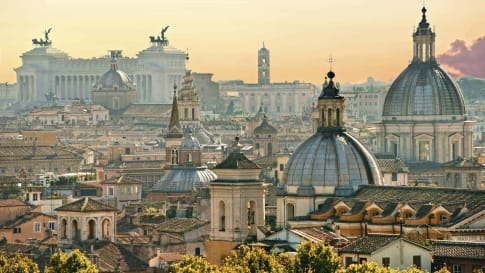
15 days
DecDiscover Rome | Cultural and History Small Group Tour for Seniors
Visiting Italy
Rome is arguably the most fascinating city in Italy, the capital city, once the centre of a vast, ancient empire and still today a cultural focus within Europe. Explore the city in-depth as part of a small group program spending 15 days exploring, just Rome and Roman History.
From A$9,235 AUD
View Tour
22 days
Mar, Sep, MayFlorence: Living in a Renaissance City
Visiting Italy
A small group tour with like minded people, couples or solo travellers, that is based in Florence. An authentic experience of living in this Renaissance city The daily itineraries draw on local guides to share their knowledge on this unique European tour. Trips to Vinci, Sienna and San Gimignano are included.
From A$14,375 AUD
View Tour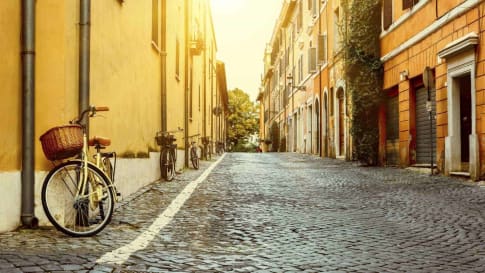
22 days
Sep, Apr, MarHeritage, Culture and History of Italy | Small Group Tours for Seniors
Visiting Italy
Rome, the world’s first superpower, lasted for almost a thousand years. In this small group tour for senior couples and solo travellers we thread our way through the Rome of the Emperors, then through the Italy of the Renaissance, Michelangelo, the Medici, and the Borgia. In the south, we visit the cosmopolitan city of Naples as well as Pompeii and the island retreat of Capri.
From A$13,695 AUD
View Tour
11 days
Sep, MayHeritage, culture, history of Italy, seniors small group - Short Tour
Visiting Italy
Odyssey's small group tour features the best of the Italian countryside as well as the great cities and icons of Italy. We will see the Renaissance cities of Florence, Pisa, and Lucca as well as the Umbrian medieval cities of Perugia.
From A$8,195 AUD
View Tour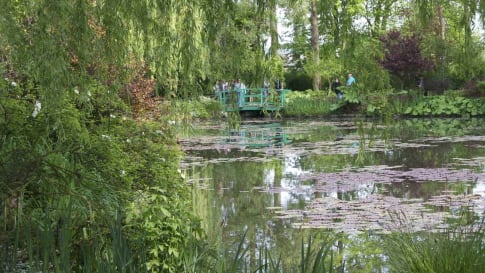
25 days
Aug, May, SepItaly and France, history of gardens small group escorted tour
Visiting France, Italy
Odyssey's small group tour explores some of the classic gardens of Italy and France that reflect changing fashions and garden designs throughout the ages. This fully escorted tour features an Odyssey Program Leader and a handful of local guides who will examine, discuss, compare and contrast the cultural and temporal similarities and diversities between the gardens of Italy and France and the historical influences on their design.
From A$18,475 AUD
View Tour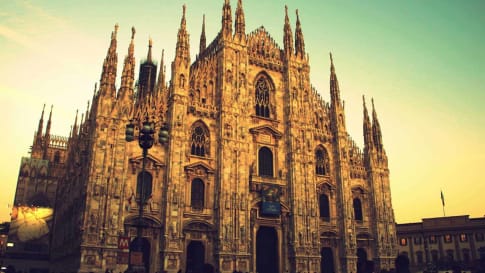
15 days
Sep, MayLakes and Landscapes of Northern Italy | Short Small Group Tour for Seniors
Visiting Italy
Our small group tour begins in the cosmopolitan city of Milan and ventures to 2 of the region's lakes - Garda and Maggiore. Our tour uncovers a wealth of natural beauty, castles, serene waters, snow-capped mountains, and breathtaking scenery.
From A$9,685 AUD
View Tour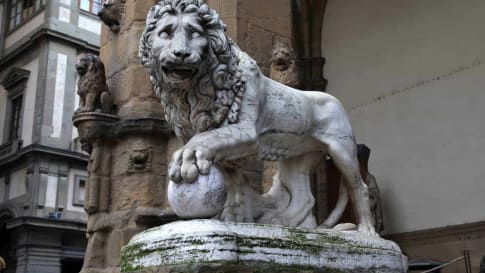
21 days
Apr, Aug, MayRenaissance Italy Tour: Story of Five Families
Visiting Italy
Explore Renaissance Italy on this small group tour though an examination of five significant city states. Florence, Urbino, Ferrara, Mantua and Milan were all dominated by families determined to increase the status of their city through art and architecture. Spend time coming to know the men and women who helped create the cities, as well as the magnificent legacy they left behind.
From A$14,995 AUD
View Tour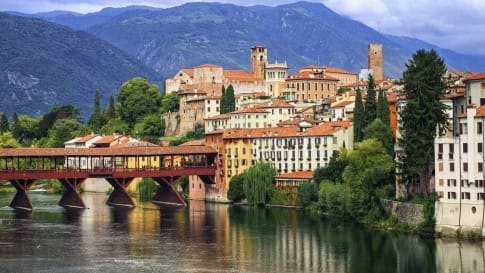
22 days
Oct, AprTour of Northern Italy's Lakes and Alps
Visiting Italy
A European tour to the stunning Lakes Region of Italy. Your travel experience begins in Milan, daily itineraries include two of the region’s lakes - Garda and Maggiore, plus the Roman villa Desenzona and a day in Cinque Terre. Local guides share experience and knowledge with you on this escorted small group tour for couples and solo travelers.
From A$14,895 AUD
View Tour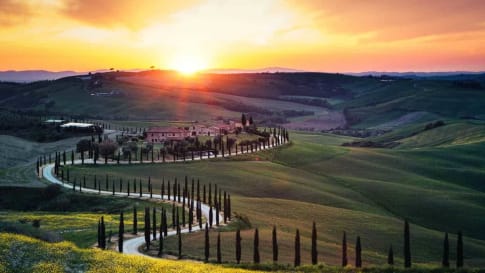
17 days
Sep, AugVia di Francesco Walking Tour | Small Group Walking Tours Italy
Visiting Italy
Experience with like minded people a small group journey walking Via di Francesco (or the Way of St. Francis) in Italy. One of a few European tour companies who offer a tour leader and local guides for senior couples and single travellers on this journey between the key destinations on this walk.
From A$12,695 AUD
View Tour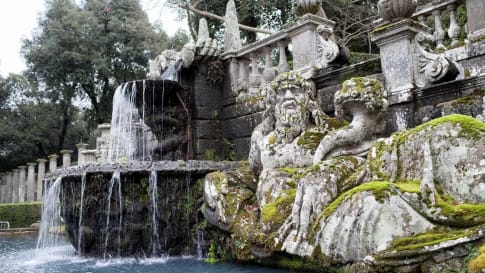
18 days
Apr, Sep, MarVia Francigena Walking Tour: Great St. Bernard Pass to Rome
Visiting Italy, Switzerland
An escorted tour that walks sections of the ancient pilgrimage route Via Francigena. Our small group is joined by Local guides to share knowledge and authentic experiences as our group of like minded people make their way to Rome.
From A$13,250 AUD
View Tour
13 days
AugVillages of Italy - short small group tours
Visiting Italy
Roam the villages of the northern Dolomites, in Italy, home to more than 40 glaciers. A small group tour is a great way to get to know Italy, or reacquaint yourself with its beauty and hidden gems. Travel with like minded mature couples or solo travellers.
From A$11,445 AUD
View Tour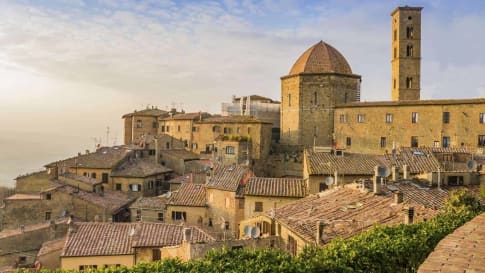
26 days
Aug, SepVillages of Italy | small group tours Italy
Visiting Italy
Explore Italy in a small group tour. Italy is the most Mediterranean of nations and as mature and aged as many of its red wines. In terms of being a nation, it is even younger than New Zealand. This is often hard to believe, bearing in mind that Italy gave rise to Europe’s first global empire, which endured for approximately 2,000 years, the Romans. The new constantly brushes with the old and in doing so generates sparks that makes any sojourn in Italy a deeply textured experience.
From A$16,775 AUD
View TourMontepulciano
Montepulciano is a small hill town located in Tuscany, in the province of Siena. Montepulciano is mostly known for its mediaeval buildings and its natural beauty. The town is located at an altitude of 600 metres and is perched on top of a limestone ridge. Montepulciano’s economy is mainly based on agriculture and is known for its beautiful wines including “Il vino Nobile di Montepulciano”.
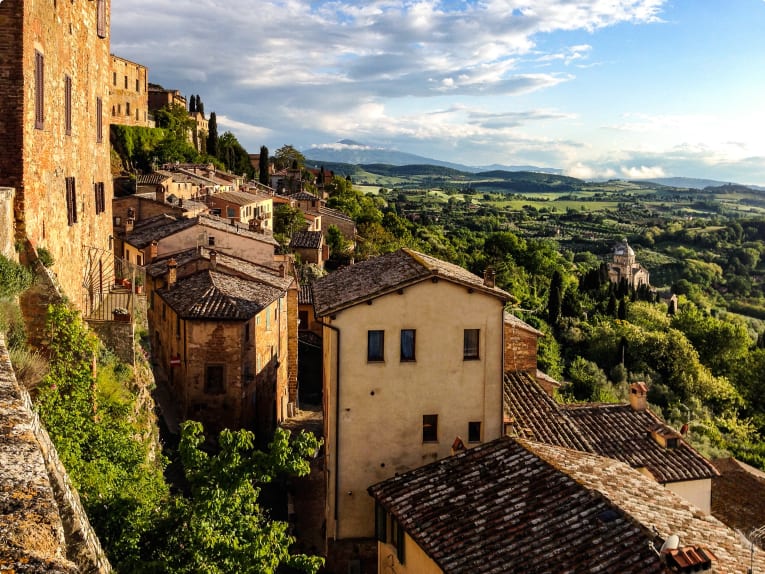
Colle di Val d’Elsa
This is now one of the world’s great centres for ornamental glass and its development, and is a living testimony to the continuing Etruscan tradition of excellence in ceramics. Colle di Val d’Elsa is a town located above the valley of the river Elsa on the route of the ancient Via Francigena.
During the 16th century Colle di Val d’Elsa was still part of the Florentine sphere of influence, but was gradually gaining independence, mainly thanks to the de Medici family and to the local ruling families who handled the town’s administration. Following the formation of the grand duchy of Tuscany in 1592, a Bull passed by Clemente VIII created Colle Val d’Elsa the seat of a new diocese. In the 17th century, the Usimbardi family introduced glass production into Colle di Val d’Elsa. The paper industry was replaced by the new iron and glass industries. The production of glass evolved into lead-glass crystal production and this became the principal industrial activity of the town which became known as the Bohemia of Italy in the 19th century. Today Colle di Val d’Elsa produces 15% of the world’s crystal.
Monteriggioni
Monteriggioni is possibly the finest example in Italy of a mediaeval walled town. It began as a border fortress built on a round hill by Sienna to act as protection against the Florentines. It is famous for the intact defensive structure that held up against repeated Florentine attacks in the 11th century; its 10 metre high walls and 14 towers can still be seen for miles around. Monteriggioni has been featured in movies as a typical medieval village.
The village is slightly elliptical in shape with two gates (a third has been plugged). The major gate, Porta Franca, owes its name to the Via Francigena-Monteriggione and was a major stop on the pilgrimage trail from Canterbury to Rome. The Romanesque Church of Santa Maria Assunta will offer assistance with housing for modern pilgrims traveling the Francigena pilgrimage route.
San Gimignano
Soaring over the Val d’ Elsa, this picturesque settlement is often regarded as the quintessential Tuscan hilltop town. Founded in Etruscan times, it is an outstanding example of mediaeval town planning. An important market centre in the 10th century, it boasted nine inns for foreign merchants during the Middle Ages and the seventy-two towers were a clear expression of the city’s prosperity. The new course of the Via Francigena pilgrim route from Canterbury to Rome, the Frankish Way, dropped San Gimignano in favour of Poggibonsi and Colle Val d’Elsa, which led to the gradual decline of San Gimignano, but fortunately for us, to its current state of preservation as a typically Tuscan mediaeval commune.
Still surrounded by its mediaeval walls, one enters the town through the 13th century San Giovanni Gate, with its characteristic segmental Sienese arch. The Piazza del Duomo is the town’s monumental centre, enclosed by tall towers and robust palaces. It is bordered on the southern side by the Palazzo del Popolo, with the characteristic Torre Grossa; on the western side, above a steep flight of steps, the Collegiata; on the northern side the picturesque Torre del Salvucci; and on the eastern side, the ancient Palazzo del Podestá.
From a number of vantage points in the town there are wonderful views down to the gently undulating hills below, where the main agricultural pursuit is viticulture. San Gimignano is famous for its white wine made from the Vernaccia grape, our small groups enjoy a wine tasting while visiting the town.
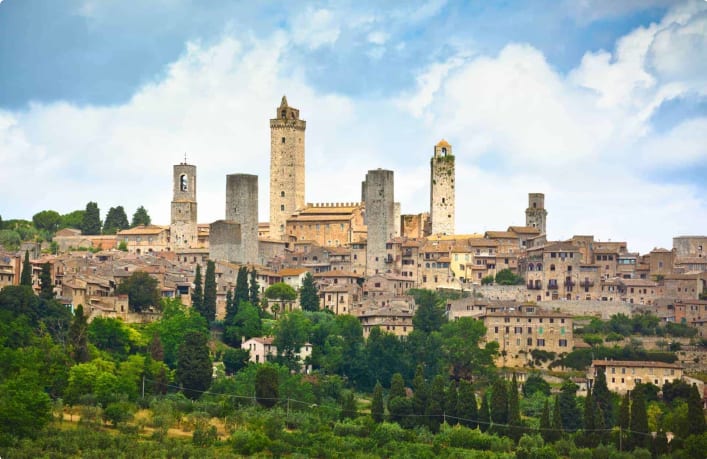
Certaldo
Certaldo is a small Tuscany town of mediaeval origin, in the Val d’Elsa. From the end of the first Florentine Republic and the Medici dynasty Certaldo became (in the first half of the 18th century) a domain of Lorraine. It saw further economic development in the 19th century, coinciding with the construction of the railroad that gave a considerable boost to manufacturing and trade. Today Certaldo is essentially a destination both for its historical buildings, perfectly preserved in the upper part of the city, and for the landscapes of the area.
Arguably the town’s most illustrious and famous citizen, Giovanni Boccaccio, was born here in 1313 (d. 1375). He is well known both as the author of Decameron and various other works. Boccaccio’s house was seriously damaged during the World War II, but was meticulously restored after the war. Today the house is also home to the Centro Nazionale di Studi sul Boccaccio (National Centre of studies on Boccaccio), which houses in its rich library a large number of foreign translations of the Decameron.
Pienza
Pienza is a beautiful hilltop town situated above the Orcia and Asso Valleys. Originally a village called Corsignano, it was transformed by the humanist Pope Pius II (Enea Silvio Piccolomini) who wanted to elevate his birthplace into a city of note.
Between 1459 and 1462, the Florentine architect Bernardo Rosellini created the principal religious and civic building around a piazza: cathedral, bishop’s palace, Piccolomini palace and town hall – the first set of buildings to be designed in the new renaissance style pioneered in Florence from the 1420s.
The Tuscan countryside around Pienza is delightful. Surrouding the village you will encounter breathtaking scenery of rolling hills and picturesque valleys, where farmers engage in a variety of agricultural pursuits, including the production of cheese, most particularly their famous sheep’s milk cheese formaggio di pecora.
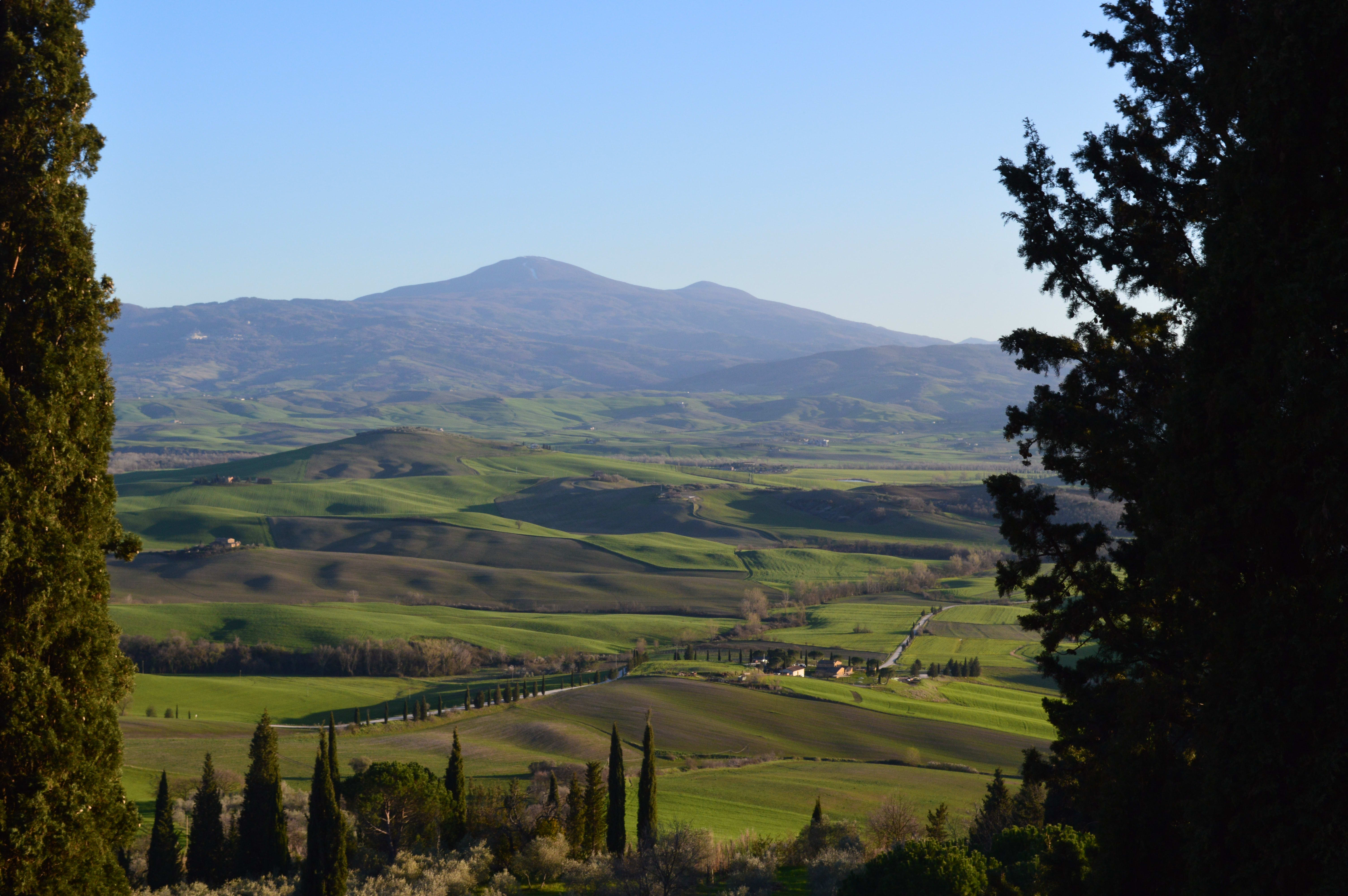
Prato
This second-largest city in the region is known for its textiles. The Museo del Tessuto is an impressive textile museum that conserves samples ranging from the 5th century to today. The city presents a well-preserved historic centre and the only example of Swabian architecture in North-central Italy – the Emperor’s Castle.
Although small in size, the town offers plenty to see as we walk around and explore the beautiful frescoes by Filippo Lippi at the Cathedral and view the other churches and palaces. One notable feature of the Cathedral is the external pulpit, by Donatello an Michelozzo. Another worthy stop is the iconic Biscottificio Mattei to sample Prato’s traditional almond biscuit.
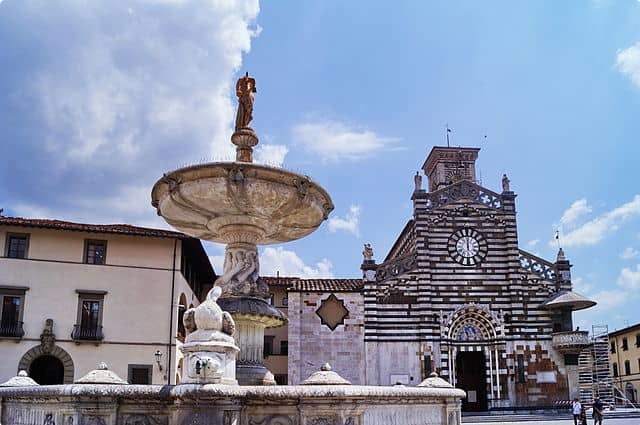
Pistoia
An ancient Roman town built against the foothills of the Apennines, Pistoia is a city whose proximity to Florence causes many travellers to pass it by on their way to Lucca or Pisa. It is crossed by the Ombrone Pistoiese, a tributary of the River Arno. Situated halfway between rivals Pisa and Florence, it inherited beautiful Romanesque churches and Gothic sculpture through the influence of Pisa and the best of the Renaissance from its proximity to Florence.
Pistoia was a city encircled by walls – great stone quadrangles that were destroyed and rebuilt twice over a period of 600 years as rival factions fought for control of the rich agricultural region. Remnants of the walls still exist near the Piazza del Duomo or cathedral square.
The Cathedral of San Zeno, the mediaeval bell tower and the nearby Baptistery are adorned with exquisite Carrara and serpentine marble in a simple white and green pattern. This two colour combination can be seen in more complex designs on mediaeval churches throughout the city. The Cathedral Museum, houses a beautiful silver altar dedicated to St James, by the 15th century artist Andrea della Robbia.
Radda in Chianti
Radda in Chianti is a on a hill covered with woods and extensive vineyards forming the watershed between the Pesa and Arbia valleys. Formerly belonging to the Guidi family, it came under Florentine control in 1203. After being fortified in 1400 it was, from 1415 onwards, head of the League of Chianti and it preserves the remains of its ancient walls. The structure of the mediaeval village is still intact; it grew up elliptically around the church of San Nicolò, of 14th-century origin and the Palazzo Pretorio. Built about 1415, its facade adorned with the coats of arms of the podestà (chief magistrates), the latter is now the seat of the municipality.
Just outside the village, in the Vignale farm, are the headquarters of the Chianti Classico consortium – its symbol is the black-cockerel, the former emblem of the League of Chianti, and the Centro di Studi Chiantigiani (the Centre for Chianti Studies), founded in 1984, with a small library and an archive devoted to the history of Chianti and its agriculture. The Montevertine farm, near the village, houses the small Museo del Chianti, with displays relating to the farming community.
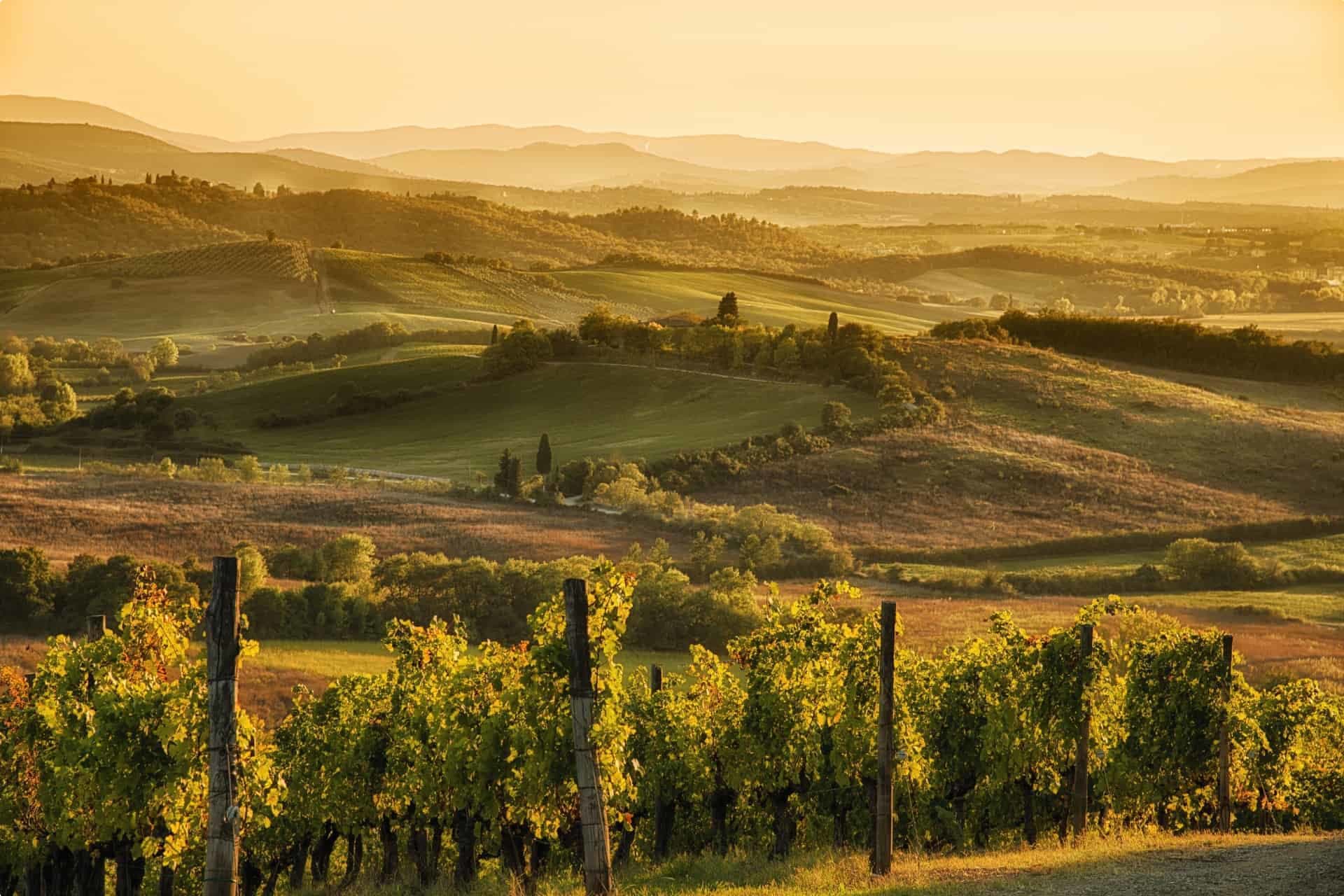
Greve in Chianti
Sitting in the Val di Greve, it is named for the small, fast flowing river that runs through it and is the principal town in the Chianti wine district which stretches south of Florence to just north of Siena. Even in ancient days Greve was not isolated because it was well connected by secondary roads to the Via Volterrana and Via Francigena.
With the enlargement of the Chianti wine district in 1932, Greve suddenly found itself in a noble wine area. The Chianti region supports a variety of agricultural activities, most especially the growing of the grapes that go into the world famous Chianti and Super Tuscan wine (s).
Since early mediaeval times, Greve evolved as the principal market town at the centre of an increasingly densely populated area with an abundance of villages, parish churches, villas and castles. The latter were built mostly by the rich merchants and noble classes of Florence who enjoyed the country life, and developed their estates to earn additional income and also to supply their town tables.
Panzano in Chianti
The little town with Etruscan origins is situated on the Chiantigiana road between Castellina and Greve: a populated centre of Chianti which experienced a tormented history caused by the bloody quarrels between Florence and Siena.
During the second half of the 10th century, members of Chianti`s landed aristocracy began building castles, or fortifications, from which to defend their properties. The years between the middle of the 11th century and the early decades of the 12th century saw the highest rate of construction of such fortifications, one of which was the Castle of Panzano. Most probably built by the Firidolfi family – it sits on the summit of a hill facing the Church of San Leolino. Within a short period of time, the castle became the focal point for population growth in the area, as well as its centre of power.
During the early years of the 14th century, the city of Florence reorganised the administration of its lands into autonomous jurisdictions, called ‘Leagues’. The Castle of Panzano fell into the “League of the Greve Valley” where it played a dominant role. Firstly because it became the most populated centre in the area and secondly, during times of conflict, the commissioner of the Florentine Republic charged with overseeing the defence of the jurisdiction resided at Panzano.
After the fall of the Sienese Republic in 1555, defence ceased to be of the highest priority. The fortifications which had made the Castle of Panzano the most important fort of the League of the Greve Valley were gradually dismantled and converted into farm buildings. The castle walls still stand around the entire perimeter of the fort as well as two of the original corner towers. One serves as the bell tower for the parish church. The other, more imposing one, is a private home
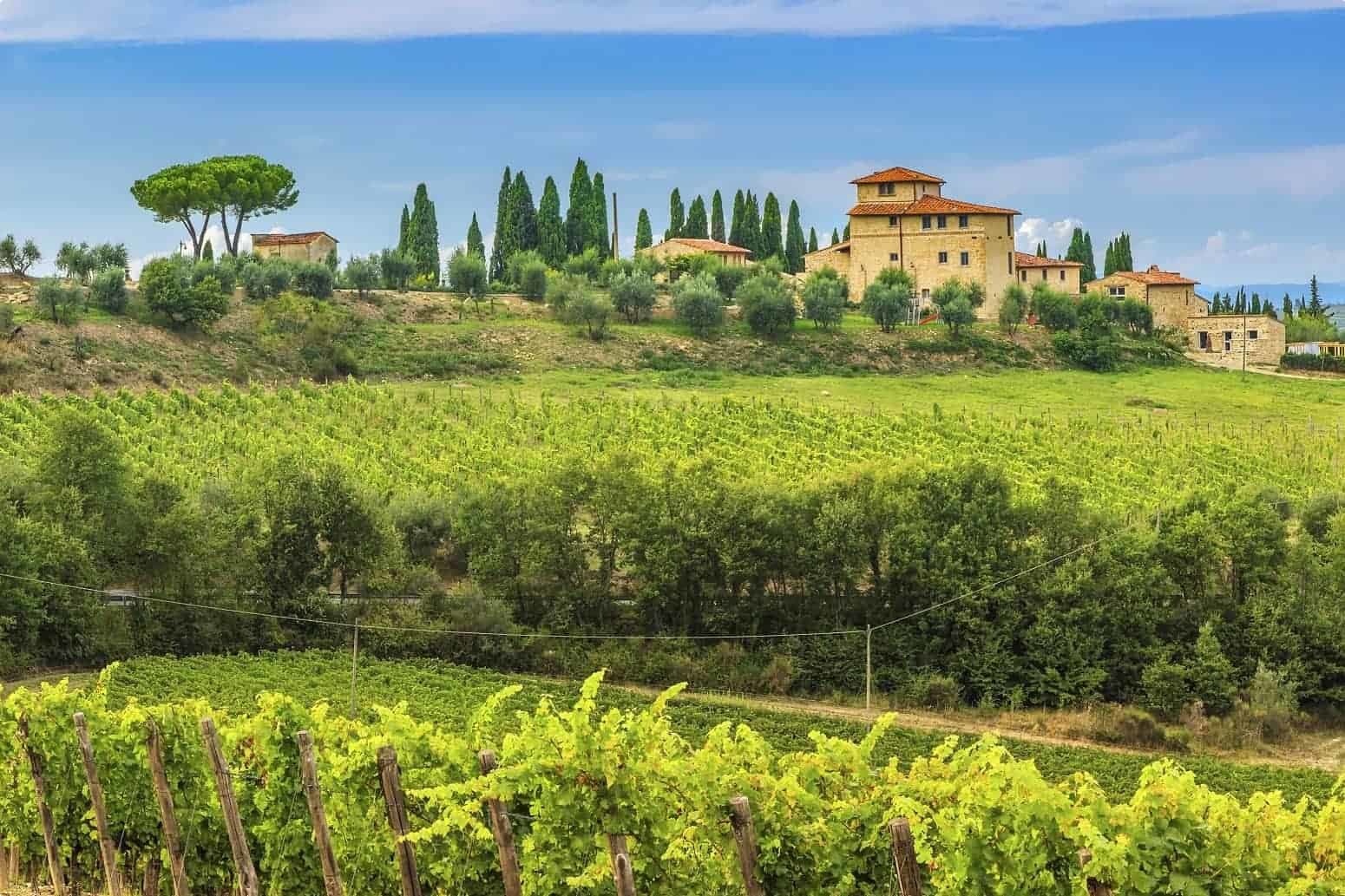
Arezzo
Found at the convergence of four valleys: Valdiarno, Val Tiberina and Casentino occupying a site which controlled the major passes of the central Apennines.
Arezzo thrived as an Etruscan capital from the 7th to the 4th centuries BC, and was one of the most important cities in the Etruscans’ anti-Roman 12-city federation, resisting Rome’s rule to the last.
The city eventually fell and in turn flourished under the Romans. In 1248 Guglielmino degli Ubertini, a member of the powerful Ghibelline family, was elected bishop of Arezzo. This sent the city headlong into the enduring conflict between the Ghibellines (pro-emperor) and the Guelphs (pro-pope). In 1289 Florentine Guelphs defeated Arezzo in a famous battle at Campaldino. Among the Florentine soldiers was Dante Alighieri (1265-1321), who often referred to Arezzo in his Divine Comedy. Guelph-Ghibelline wars continued to plague Arezzo until the end of the 14th century, when Arezzo lost its independence to Florence. After a short period of French rule during the Napoleonic Wars, the rule of the Habsburg grand dukes was restored until Arezzo became part of Italy in 1861.
Arezzo is today best known for the magnificent Piero della Francesca frescoes in the church of San Francesco and stained glass masterpieces by Guillaume de Marcillat. It’s also the birthplace of the poet Petrarch (1304-74), the Renaissance artist and art historian Giorgio Vasari, Guido d’Arezzo (aka Guido Monaco), the inventor of musical notation and Pietro Aretino, author, playwright, poet and satirist who wielded immense influence on contemporary art and politics.
Now one of the wealthiest cities in Italy, Arezzo is renowned for its manufacture of gold jewellery, which is exported all over the Europe.
Cortona
Cortona is situated in the province of Arezzo, in Tuscany. It is the main cultural and artistic centre of the Valdichiana after Arezzo. It sits on a green mountainside above terraced olive groves, a steep mediaeval city where cut stone staircases take the place of many streets, and views over the wide Chiana Valley (Valdichiana) stretch south to Umbria’s Lake Trasimeno.
Originally an Umbrian city, it was conquered and enlarged by the Etruscans, who called it Curtun. Cortona was already a thriving city by the 4th century BC, when it was one of twelve cities that formed the Etruscan confederation. Finds of many Etruscan tombs dotting the hillside and valley below the town, suggest it may have been an even more important centre than previously believed. Cortona eventually became a Roman colony under the name Corito.
Cortona is the birthplace of the great pre-Michelangelo painter Luca Signorelli and the early 17th century painter and architect Pietro da Cortona. Cortona’s Renaissance cathedral, Il Duomo di Cortona, built on the site of an Etruscan temple, holds beautiful 16th and 17th century artworks including an Adoration of the Shepherds by Pietro da Cortona.
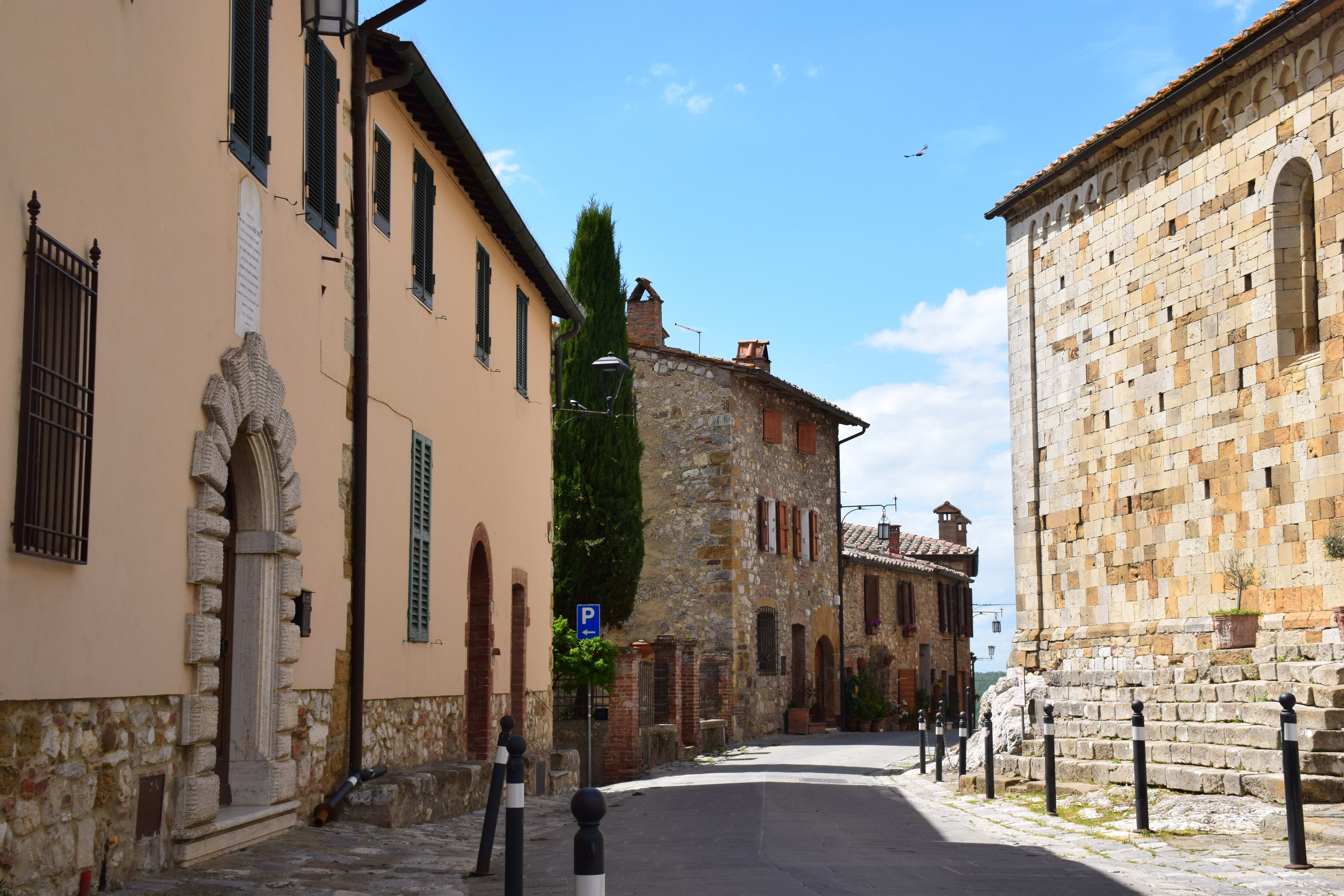
Lucca
The Roman town of Lucca revived in the Middle Ages, based on silk textiles and money lending, coupled with successful political alliances that preserved its independence despite the size and power of its Tuscan neighbours. Lucca’s Romanesque churches, built in a distinctive style with green and white marble, are a priceless heritage of this period. In the mid-16th century, a third circle of walls was erected – brick ramparts and bastions broad enough to withstand cannon. Never required in war, they were adapted into a shady walk with delightful views of roof tiles and towers.
Lucca’s Roman legacy is evident in its grid like street plan and also in a curious oval shaped piazza of mediaeval houses, reached by a great stone arch: the houses are built against the outer walls of a 2nd century amphitheatre.
In 1805 Lucca was taken by Napoleon, being no match for his modern guns and canons – the city simply gave up before a shot was fired. Napoleon put his sister Elisa Bonaparte Baciocchi in charge as Princess of Lucca. After 1815 it became a Bourbon-Parma duchy, then part of Tuscany in 1847 and finally part of the Italian State.
Lucca’s greatest cultural contribution has been musical. The city had a “singing school” as early as 787AD, and this town of musical prodigies gave the world Luigi Boccherini (1743-1805), the composer who revitalised chamber music in the 18th century, and most famously the operatic genius Giacomo Puccini (1858-1924), whose Tosca, Madame Butterfly, Turandot, and La Bohème have become some of the world’s favourite operas.
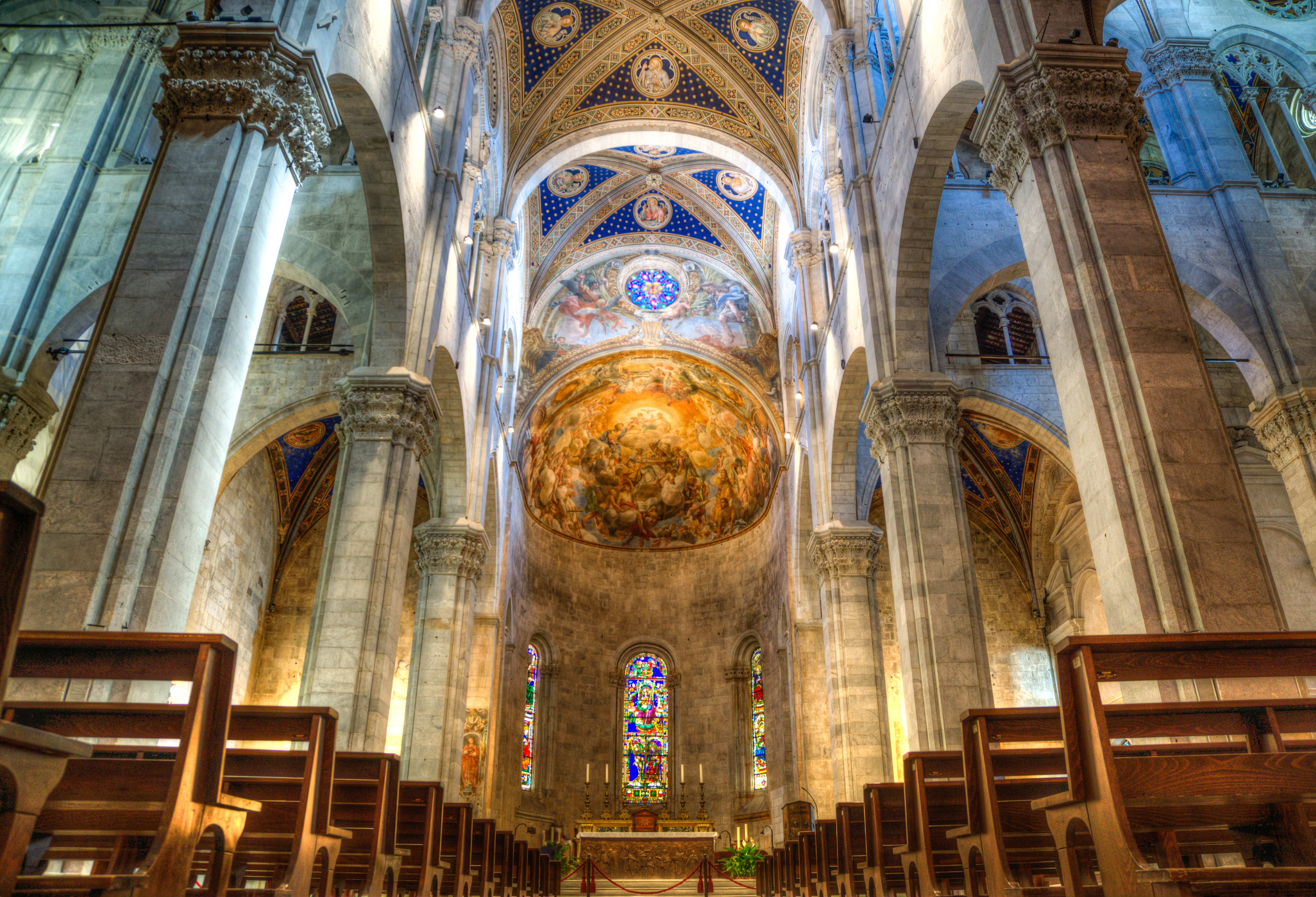
Pietrasanta
Pietrasanta is a small town in the province of Lucca and is one of Italy’s most famous towns for the production of marble sculpture. The town has served as a sanctuary for international sculptors and artists for six centuries and it was here, in the lofty quarters of the city’s palazzi, that Michelangelo, Henry Moore, and, more recently, Fernando Bottero chose to set up their residence, in part due to the town’s proximity to the marble quarries of Carrara.
Pietrasanta has straight and narrow streets that follow a Roman grid layout and has maintained its status not only as one of the region’s most beautiful towns, but also as one of Tuscany’s most creative epicentres.
Carrara
The town of Carrara is not far from any of the marble quarries, and since its origin, the town has been linked with the process of quarrying and marble working.
Marble is limestone that has been heated, compressed and recrystallized into a denser form. In Carrara, Jurassic age limestones were compressed and deeply buried during collisions of the African and European plates. The resultant marbles were later exposed by uplift and erosion of the northern Apuan Alps outside Carrara.
The Romans began quarrying marble near Carrara in the 2nd century BC. Marble blocks were carted to the nearby port of Luni for shipment throughout the Mediterranean
Marble production declined after the fall of Rome but picked up again during the Renaissance. In the 15th century, Michelangelo hand selected blocks of the purest statuario marble at Carrara and had them carted to the coast and then barged up the Arno River to Florence. After the unification of Italy a railway was constructed to carry the blocks of marble from the mountain to the plain.
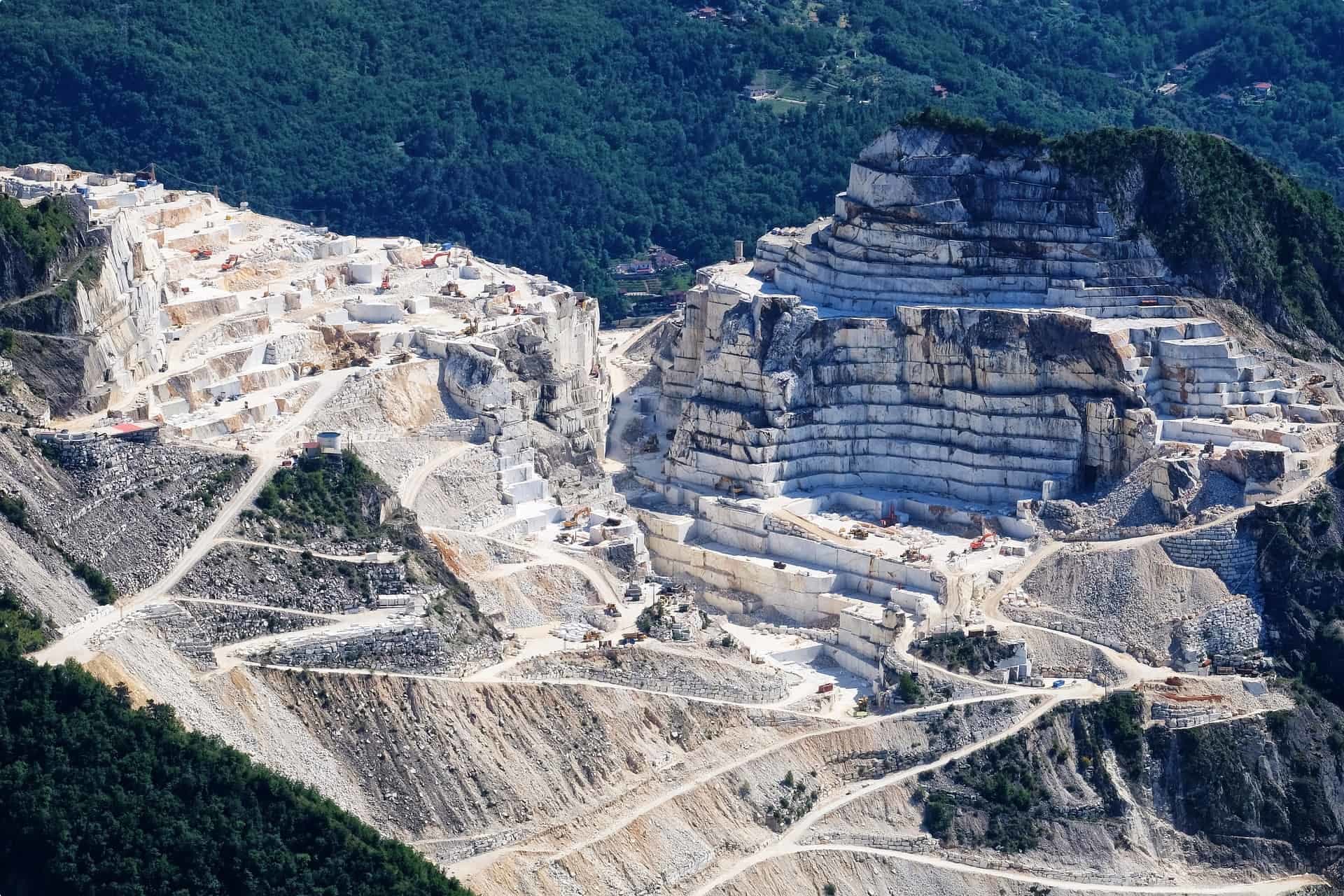
Colonnata
The Tuscan hamlet of Colonnata is known for the production of lard or ‘lardo’. Lard is a type of salume made by curing strips of pork fat with rosemary and other herbs and spices. Lard has been made in Colonnata since Roman times. Lardo di Colonnata is now included in the Ark of Taste catalogue of heritage foods as well as enjoying IGP (Protected Geographical Indication) status since 2004.
Lardo di Colonnata is made using two great Tuscan products: the white marble from the Alps, and pork, the main type of livestock in the region. While the Romans focussed their energy on increasing the amount of marble extracted, the Barbarians that ruled the land after the Romans preferred to raise pigs for pork products, including lard. The constant mountain wind in Colonnata makes the ideal microclimate for aging lard.
Pisa
Pisa flourished as a maritime city from Roman times and established itself as a powerful trading centre. In the 11th century its fleet dislodged the Arabs from Sardinia and backed up the Normans in the seizure of Palermo. Its golden age as a maritime republic was in the 12th century when, during the First Crusade, it waged war against the Saracens in the Balearic Islands.
During the time that Pisa was a world trading power riding high on its maritime empire in the 11th to 13th centuries, it used its wealth to commission a new religious core for the city. Known as the Campo dei Miracoli (Piazza dei Miracoli) or “Field of Miracles,” they created a beautiful collection of marble-clad buildings – beautiful in their simplicity and crafted in an Eastern-influenced style that became known as the Pisan Romanesque. These imposing structures are the enormous, and UNESCO world heritage sitelisted, breathtaking Duomo (cathedral) – the cathedral’s bell tower – better known as the Leaning Tower of Pisa, the circular Battistero (Baptistery) – the largest of its kind in the whole of Italy, and the Camposanto – (Holy Field), without doubt one of the most beautiful cemeteries in the world
In 1406, Pisa fell under Florentine sway. The River Arno had silted up and Pisa’s maritime trade was largely taken over by Genoa and Venice. Population declined, but Lorenzo de’ Medici revived and strengthened its ancient university until it rivalled Padua and Bologna.
Pisa suffered severe bombardment in World War II, but both sides avoided damaging the glorious cathedral, baptistery and bell-tower, architectural masterpieces faced with gleaming white marble from nearby Carrara.
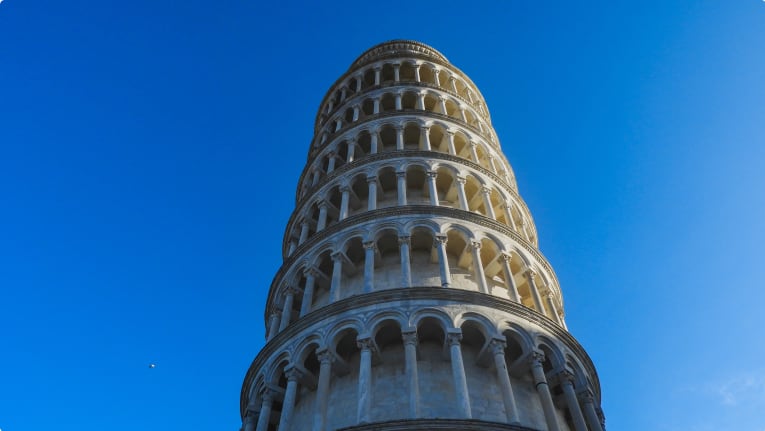
Volterra
Situated on a summit above the Cecina and Bra valleys, Volterra is a city of severe mediaeval aspect based on a rich heritage of agriculture and artisan activity. With its history stretching back to Etruscan and then Roman times, when it was a municipality, it enjoyed free city status between the 12th and 15th centuries. In the Etruscan period, Volterra, called Felathri by the Etruscans and Volaterrae by the Romans, was one of the most important cities in the Etruscan Confederation which was eventually dislodged by the Romans on their own path to empire.
Parts of the Etruscan walls still stand in Volterra and the Guarnacci Museum contains some of the best Etruscan funereal artifacts in Italy – including six hundred urns made of tufa, alabaster and terracotta from the 6th to the 1st centuries BC.
Major Florentine artists are represented in the art gallery, including Ghirlandaio, Signorelli and Rosso Fiorentino. The Roman theatre dates back to the 1st century BC and is situated just outside the city walls. With the five-metre-high Corinthian columns of its scene still standing, it is one of the best preserved Roman theatres in Italy. On one side of the main square is the Palazzo dei Priori, which is said to have been the prototype for the more famous Palazzo Vecchio in Florence; on the other is the Porcellino Tower, named after the carving of the small pig at its base.
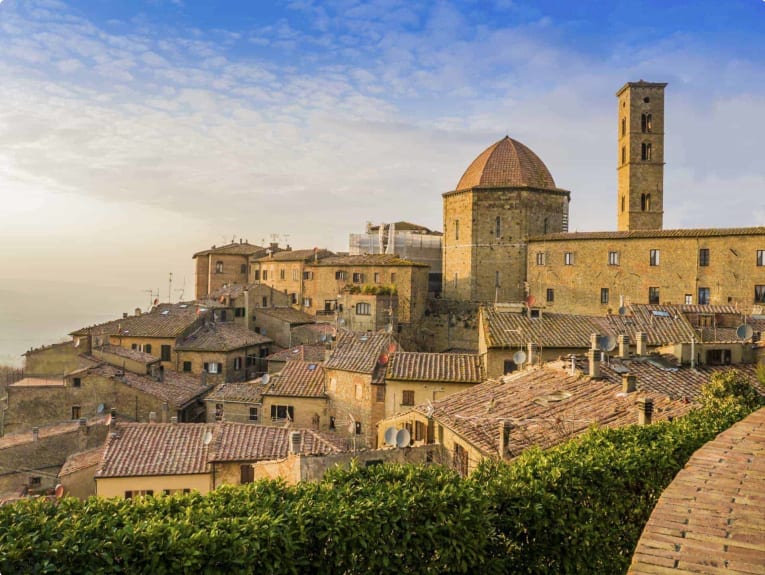
Odyssey’s escorted tour to Italy visit many of the famous sights but we also step off the tourist routes to explore and engage with the Italian culture and deepen our knowledge of its rich history. All in a small group tour setting.
Odyssey Traveller has been designing international tours for mature and senior travellers since 1983, with an emphasis on educational tours, designed to give you an in-depth experience of your travel destination. Our tours cover pretty much every region of the Italy, from the beautiful northern regions of Liguria (Genoa) to Veneto (Venice), travelling through Tuscany (Florence), Lazio (Rome) and south from Puglia (Bari) to Calabria (Catanzaro) and of course the islands of Sicily & Sardinia.
Here’s a short list of Odyssey’s tours that visit Italy, for a complete list of tours on offer head to our Italy country page:
Articles about Italy published by Odyssey
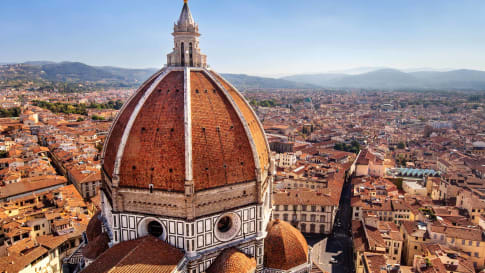
Questions about Italy
Escorted small group tours for mature and senior travellers to Italy. Designed for couples and solo travellers who like to explore and enjoy learning as they travel to Rome, Florence, Genoa, Venice, Naples, Sicily or Lake Garda and beyond.
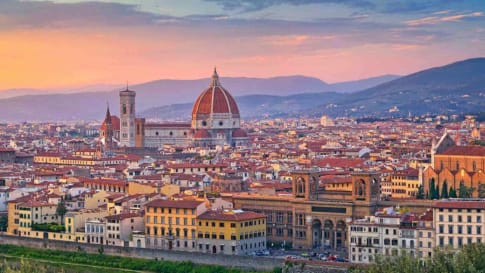
Secrets of Florence: The Definitive Guide for Travellers
Secrets of Florence: Ten Hidden Gems to Visit Florence, the capital of the Italian region of Tuscany, is considered to be the birthplace of the Renaissance. Today the small city leaves behind a powerful legacy…
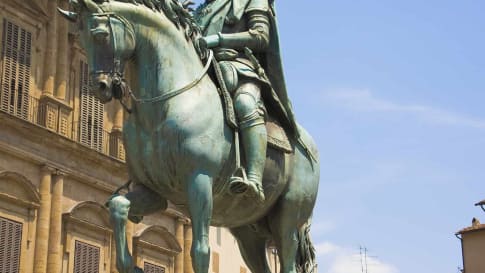
The Rise of the House of Medici
The House of Medici was an Italian banking family and political dynasty that de facto ruled the city of Florence during much of the Italian Renaissance.

The Sicilians and their Kings
The Sicilians and their Kings While popular images of Sicily might focus on the active volcano, Mount Etna, or the poverty that led to the mass migration of Sicilians to America, forming today’s communities of…

Venice and the History of Maps
Venetian Maps and How they Ruled the World ‘Venice was always a frontier,’ Peter Ackroyd (2009) declares in Venice: Pure City. ‘When the empire was divided in the time of Charlemagne, the lagoons of Venice…

Key Figures of Renaissance Florence
Five Key Figures of Renaissance Florence | Small Group Tours Regarded as the ‘birthplace of the Renaissance’, Florence from 1400 to 1600 was in a religious, cultural and political ferment that was crucial to shaping…
External articles to assist you on your visit to Tuscany:
- Visit Tuscany – official tourism website
- The best things to to in Tuscany – from medieval festivals to truffle hunting
- Through the pages of Tuscany – where some of the best writers found inspiration
- A road trip through Tuscany’s breathtaking countryside
- The Da Vinci road: walking through Tuscany
- Living in…Tuscany
- A private view: explore the quieter side of Florence



